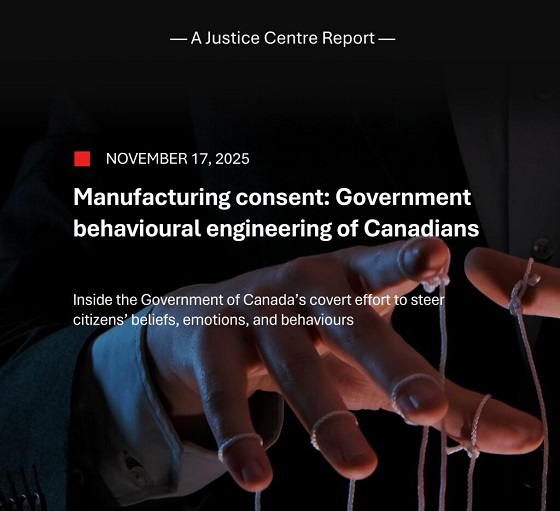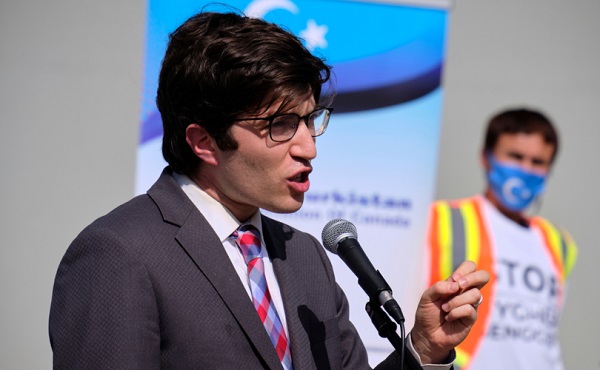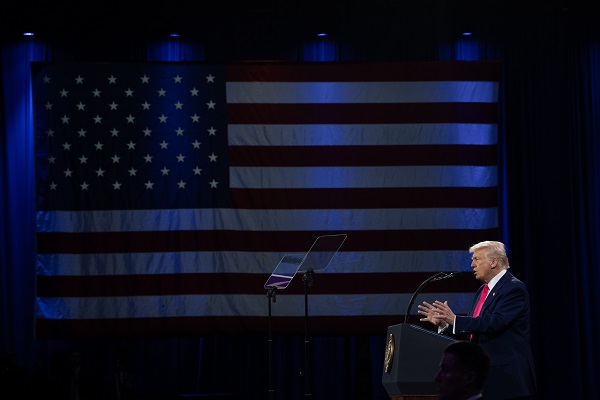Brownstone Institute
The Tragedy of the Brooklyn Literary Scene

From the Brownstone Institute
BY
I recently came home from a visit to Hipster Brooklyn.
I had found that Brooklyn — alongside literary Manhattan — was oddly frozen in an amber of denial and silence.
First, there is that restored state of freedom, that no one will discuss.
I’d wandered the cute little boîtes and trendy underground hand-pulled-noodle postmodern food courts, with mixed emotions.
There were the chic young moms with babies in strollers, both of them breathing freely in the chill just-before-Spring air. There were slouching Millennials, with every demographic likelihood of having been mask-y and COVID-culty, now enjoying their freedom to assemble at will, to flirt and to window-shop, to stroll and to chat and to try on new sweaters in person at Uniqlo.
Many of these folks, no doubt, would have been repelled from 2020 to the present, by people like my brothers and sisters in arms, and by me; as we struggled in the trenches of the liberty movement.
Some of them may have called us anti-vaxxers, extremists, insurrectionists; selfish, “Trumpers,” or whatever other nonsense was the epithet of the day.
Some of them may have wanted to lock down harder, and lock us down harder.
My brothers and sisters in the freedom movement, though we lost employment, savings, status, and affiliations, fought every day — for these very folks; we fought for everyone; we fought so that some day, these young moms could indeed stroll with their babies, breathing fresh air; so that these slouching Millennials could one day indeed wander at will, not “locked down” still, not “mandated” any longer, and not living in fear of an internment camp.
It was bittersweet, seeing this demographic so chill, so relaxed, so back to “normal” — many of whom had been once so oblivious of, or so actively disrespectful of, the sacrifices we on the outside of society had waged for their very freedom.
Who knows where they would be now, if it were not for our combat on their behalf?
Still without their rights regained, like Canada? Still “mandated,” like Canada? Still scared to speak, scared of having bank accounts frozen, scared of losing licenses, scared of being beaten in protests, forbidden to travel without dangerous injections — like Canada?
We are not entirely free again in the US, but we regained many of our freedoms. Not because the evildoers wanted to give them back; but because my brothers and sisters fought hard, strategically, bitterly and furiously, for all of this liberty that I witnessed in front of me, on that almost-spring day on the crowded, tumultuous Fulton Avenue.
It was bittersweet to know that these people would never witness us, or acknowledge what we did for them and their children; let alone thank us; let alone apologize to people like me for the years in which they were just fine with folks such as us banished to the outer edges of society, to eat in the cold streets of New York like animals, or made jobless, or ostracized.
In addition to the dissonance of seeing people who had been perfectly okay with discriminating against the very people who had fought to return to them the liberties they now enjoyed, I suffered a sense of disorientation at realizing that there was a giant cognitive hole in the middle of contemporary culture.
The staffers at the Brooklyn branch of McNally Jackson Bookstore, an independent bookstore which had for years been a stalwart outpost of free-thinking publishing, were still masked, against all reason. I walked in with some trepidation.
Peacefully, faces covered, three years on, they stacked books on the shelves.
I was astonished, as I wandered the well-stocked aisles. Independent bookstores usually reflect the burning issues in a culture at that given time.
But — now — nothing.
It takes about two years to write a book, and about six months to publish one. It was surely time for the new important books from public intellectuals, about the world-historical years through which we had just lived, to appear.
But — no.
In the center of an altar to literate culture, it was as if the years 2020-2023 simply did not exist and had never existed.
This can’t be possible, I thought. This all — the “pandemic,”
lockdowns, denial of education for children, forced masking, forced vaccinations, “mandates” — a crashed economy — globally — this all, as an aggregate, was of course the most important thing ever to have happened to us as a generation of intellectuals.
I kept on searching the stacks. Nothing.
I checked the Top Ten Nonfiction Books in Time.
None had to do with the pandemic policies or the “lockdowns” or the mandated mRNA injections into billions of humans.
I surveyed the lanes lined with books, perplexed and saddened.
Surely the wonderful novelists of my generation, astute observers of the contemporary scene — Jennifer Egan, Rebecca Miller — would have written their Great American Novels about the mania that swept over the globe from 2020-2023 — one which provided once-in-a-century fodder for fiction writers?
No — or at least, not yet.
Surely Malcolm Gladwell, author of The Tipping Point: How Little Things Can Make a Big Difference, the distinguished nonfiction observer of group dynamics, would have tracked how a psychotic delusion intoxicated nations?
No, nothing.
Wouldn’t Samantha Power, author of A Problem from Hell: America in the Age of Genocide have exposed the pandemic policies that sent millions of children into starvation unto death?
Nothing.
Of course Michael Eric Dyson, brilliant and brave commentator on race in America, author most recently of Tears We Cannot Stop: A Sermon to White America, would have written an excoriating expose of how pandemic policies in the US drove brown and black children into even greater learning deficits, and drained millions from small business owners of color?
No, nothing at all.
How about Susan Faludi, respected feminist author of Backlash: The Undeclared War Against American Women? She would have addressed how decades of women’s professional advancement were overturned by “lockdown” policies that drove women out of the workforce because someone had to watch the kids stranded at home?
No.
Undoubtedly Robert Reich, longtime champion of working people, author of The System: Who Rigged It, How We Fix It would have analyzed the greatest wealth transfer in modern history?
Nothing there.
Certainly Michael Moore, author of Downsize This! Random Threats from an Unarmed American, who for decades amplified the voices of working men and women left behind in rustbelt America, would have likewise assailed the flow of wealth in the “pandemic” era from the locked-down, “distanced,” forbidden-to-work working class, to tech CEOs and Pharma shills and their oligarch friends?
Nothing to see.
I could go on and on.
From some of the other important public intellectuals whom I know or whom I have followed for decades — and I do not mean to shame anyone needlessly, so I won’t name them — there were indeed some new books.
There were books on walks through the city.
There were books on “difficult conversations.”
There were books on growing up with unusual parents.
There were books on how meaningful animals are, and how wondrous is their world.
Public intellectuals produced a lot of new books on eating more vegetables.
The bizarre thing about this moment in culture is that the really important journalism, and the really important nonfiction books about the history, the racial and gender injustice, the economics, the public policy, of the “pandemic” years — are being written by — non-writers; by people who are trained as doctors, medical researchers, lawyers, politicians, and activists.
And their books are not displayed or even stocked in bookstores such as McNally Jackson.
So there is a massive hole in the central thought process of our culture.
The courageous non-writers have stepped in to tell the truth, because the famous writers, for the most part, can’t.
Or won’t. Or, for whatever reason, didn’t.
This is because the public intellectuals are by necessity, for the most part, AWOL to the truth-telling demands of this time.
You cannot be a public intellectual whose work is alive, if you have participated in manufacturing, or even accepting quietly, state-run lies.
The work of the cultural elite of every tyranny, from Nazi Germany to Stalin’s Russia, reveals this fact.
Participation in lies by the artist makes the creation of a vibrant cultural text impossible.
Nazi art is bad art. Socialist-realist Soviet fiction is bad fiction.
Journalism in a tyranny; that is, written by state-approved scribes, is always going to be a mess of cliches and obsequiousness that no one wants to read, and that cannot stand the test of time. It vanishes like snow into the cauldron of the future — even as works by the hated, forbidden dissidents who can and do tell the truth — the Solzhenitzyns of the time, the Anne Franks — are like diamonds, that cannot be crushed or lost to time.
It is only these that survive.
Because lies embraced our whole culture since 2020, and because public intellectuals for the most part did not stand up to the lies at the time, and because many even participated in the lies (hello, Sam Harris); since horrible things happened to those of us who did stand up to the lies — most public intellectuals at this moment cannot address the really important events of the recent past.
And from conversations I had with people in liberal-elite publishing, media, education, and the arts — these public intellectuals are being enabled in their silence or distraction or collusion, by a cultural nexus that wants them silent.
The consensus in media-elite land is that no one wants to talk about these issues at all.
“People just want to move on,” I keep hearing, in my former haunts in Manhattan and Brooklyn.
Don’t talk about it.
So this all leads to a weird situation, culturally, now, indeed.
In the world of alt-media independent exiled dissidents, where I live most of the time, we are having the most riveting, important conversations of our lives. This is because we all know civilization itself, and liberty itself, and maybe even the fate of the human race itself, are at stake every day.
In the polite elite-media circles of Brooklyn and New York, to which I returned briefly to dip a toe in the water, people are — not talking about any of it.
They are not talking about the enslavement of humanity. They are not talking about young adults dropping dead.
They are talking about fermentation. They are talking about pets. They are talking, endlessly, like stalkers who cannot let it go, about how bad Donald Trump is, down to what he has for dinner in Mar-a-Lago.
The New York Times these days has the most boring headlines I have read in my life, and it is for this reason: the truth of our time is toxic to the editors of that newspaper, because they bathed in the money of the lies.
In addition to these cruelly soporific headlines, the New York Times is down to running fully imaginary stories that the editors must believe someone somewhere will accept without howling skepticism: “New Data Links Pandemic’s Origins to Raccoon Dogs at Wuhan Market.”
Then, of course, having committed that journalistic crime, the editors need to run this tragically hilarious sub-headline:
A formerly great newspaper has run its way through through bats and civet cats, burning its credibility wholesale in a gigantic bonfire of flat-out state-mouthpiece deception and uncorrected assertions for 3 full years, and is now digging up the specter of raccoon dogs. It is explaining their mating habits to its readers — stop the presses! — even as elsewhere in untouchable-reality-land, Dr Fauci furiously backpedals, trying to avoid charges of crimes against humanity.
A formerly great city of public intellectuals is unable to address current reality and is taking walks.
It is as if New York City and all its thought leaders are enchanted, ensorcelled, staring at one another, mouths open, unspeaking, inside of a conceptual snow globe, while all the rest of us ostracized dissidents are carrying on around this frozen spectacle, fighting a hand-to-hand-combat revolution.
I sighed, as I left the bookstore, and made my way through the freely moving hipster crowds.
We don’t fight for freedom so that we can get credit.
We don’t fight for truth because we want a byline.
We do both just because we can’t help it.
We do both because our Founders fought to the death so that we ourselves would be free one day.
And we fight so that little children whom we will never live to see, will grow up free.
But it is painful to witness the beating heart of what had been a great culture, stunned and muted in denial, and unable to function intellectually.
I guess we just need to leave the sadly rotting carcass of the establishment culture of lies and denial behind.
I say that with sorrow. I will miss the bookstores, universities, newspapers that I once revered.
I guess we have to follow the voices of the truth-tellers of the moment, to other, surprising, beleaguered campfires.
I guess we need to pitch our tents in new fields, outside the walls of the crumbling, breached, and decadent city.
I guess we need to learn new songs and tell new stories, as we find ourselves alongside other — surprising — fierce, and unbowed, and determined, new comrades in arms.
Reprinted from the author’s Substack
Brownstone Institute
Bizarre Decisions about Nicotine Pouches Lead to the Wrong Products on Shelves

From the Brownstone Institute
A walk through a dozen convenience stores in Montgomery County, Pennsylvania, says a lot about how US nicotine policy actually works. Only about one in eight nicotine-pouch products for sale is legal. The rest are unauthorized—but they’re not all the same. Some are brightly branded, with uncertain ingredients, not approved by any Western regulator, and clearly aimed at impulse buyers. Others—like Sweden’s NOAT—are the opposite: muted, well-made, adult-oriented, and already approved for sale in Europe.
Yet in the United States, NOAT has been told to stop selling. In September 2025, the Food and Drug Administration (FDA) issued the company a warning letter for offering nicotine pouches without marketing authorization. That might make sense if the products were dangerous, but they appear to be among the safest on the market: mild flavors, low nicotine levels, and recyclable paper packaging. In Europe, regulators consider them acceptable. In America, they’re banned. The decision looks, at best, strange—and possibly arbitrary.
What the Market Shows
My October 2025 audit was straightforward. I visited twelve stores and recorded every distinct pouch product visible for sale at the counter. If the item matched one of the twenty ZYN products that the FDA authorized in January, it was counted as legal. Everything else was counted as illegal.
Two of the stores told me they had recently received FDA letters and had already removed most illegal stock. The other ten stores were still dominated by unauthorized products—more than 93 percent of what was on display. Across all twelve locations, about 12 percent of products were legal ZYN, and about 88 percent were not.
The illegal share wasn’t uniform. Many of the unauthorized products were clearly high-nicotine imports with flashy names like Loop, Velo, and Zimo. These products may be fine, but some are probably high in contaminants, and a few often with very high nicotine levels. Others were subdued, plainly meant for adult users. NOAT was a good example of that second group: simple packaging, oat-based filler, restrained flavoring, and branding that makes no effort to look “cool.” It’s the kind of product any regulator serious about harm reduction would welcome.
Enforcement Works
To the FDA’s credit, enforcement does make a difference. The two stores that received official letters quickly pulled their illegal stock. That mirrors the agency’s broader efforts this year: new import alerts to detain unauthorized tobacco products at the border (see also Import Alert 98-06), and hundreds of warning letters to retailers, importers, and distributors.
But effective enforcement can’t solve a supply problem. The list of legal nicotine-pouch products is still extremely short—only a narrow range of ZYN items. Adults who want more variety, or stores that want to meet that demand, inevitably turn to gray-market suppliers. The more limited the legal catalog, the more the illegal market thrives.
Why the NOAT Decision Appears Bizarre
The FDA’s own actions make the situation hard to explain. In January 2025, it authorized twenty ZYN products after finding that they contained far fewer harmful chemicals than cigarettes and could help adult smokers switch. That was progress. But nine months later, the FDA has approved nothing else—while sending a warning letter to NOAT, arguably the least youth-oriented pouch line in the world.
The outcome is bad for legal sellers and public health. ZYN is legal; a handful of clearly risky, high-nicotine imports continue to circulate; and a mild, adult-market brand that meets European safety and labeling rules is banned. Officially, NOAT’s problem is procedural—it lacks a marketing order. But in practical terms, the FDA is punishing the very design choices it claims to value: simplicity, low appeal to minors, and clean ingredients.
This approach also ignores the differences in actual risk. Studies consistently show that nicotine pouches have far fewer toxins than cigarettes and far less variability than many vapes. The biggest pouch concerns are uneven nicotine levels and occasional traces of tobacco-specific nitrosamines, depending on manufacturing quality. The serious contamination issues—heavy metals and inconsistent dosage—belong mostly to disposable vapes, particularly the flood of unregulated imports from China. Treating all “unauthorized” products as equally bad blurs those distinctions and undermines proportional enforcement.
A Better Balance: Enforce Upstream, Widen the Legal Path
My small Montgomery County survey suggests a simple formula for improvement.
First, keep enforcement targeted and focused on suppliers, not just clerks. Warning letters clearly change behavior at the store level, but the biggest impact will come from auditing distributors and importers, and stopping bad shipments before they reach retail shelves.
Second, make compliance easy. A single-page list of authorized nicotine-pouch products—currently the twenty approved ZYN items—should be posted in every store and attached to distributor invoices. Point-of-sale systems can block barcodes for anything not on the list, and retailers could affirm, once a year, that they stock only approved items.
Third, widen the legal lane. The FDA launched a pilot program in September 2025 to speed review of new pouch applications. That program should spell out exactly what evidence is needed—chemical data, toxicology, nicotine release rates, and behavioral studies—and make timely decisions. If products like NOAT meet those standards, they should be authorized quickly. Legal competition among adult-oriented brands will crowd out the sketchy imports far faster than enforcement alone.
The Bottom Line
Enforcement matters, and the data show it works—where it happens. But the legal market is too narrow to protect consumers or encourage innovation. The current regime leaves a few ZYN products as lonely legal islands in a sea of gray-market pouches that range from sensible to reckless.
The FDA’s treatment of NOAT stands out as a case study in inconsistency: a quiet, adult-focused brand approved in Europe yet effectively banned in the US, while flashier and riskier options continue to slip through. That’s not a public-health victory; it’s a missed opportunity.
If the goal is to help adult smokers move to lower-risk products while keeping youth use low, the path forward is clear: enforce smartly, make compliance easy, and give good products a fair shot. Right now, we’re doing the first part well—but failing at the second and third. It’s time to fix that.
Addictions
The War on Commonsense Nicotine Regulation

From the Brownstone Institute
Cigarettes kill nearly half a million Americans each year. Everyone knows it, including the Food and Drug Administration. Yet while the most lethal nicotine product remains on sale in every gas station, the FDA continues to block or delay far safer alternatives.
Nicotine pouches—small, smokeless packets tucked under the lip—deliver nicotine without burning tobacco. They eliminate the tar, carbon monoxide, and carcinogens that make cigarettes so deadly. The logic of harm reduction couldn’t be clearer: if smokers can get nicotine without smoke, millions of lives could be saved.
Sweden has already proven the point. Through widespread use of snus and nicotine pouches, the country has cut daily smoking to about 5 percent, the lowest rate in Europe. Lung-cancer deaths are less than half the continental average. This “Swedish Experience” shows that when adults are given safer options, they switch voluntarily—no prohibition required.
In the United States, however, the FDA’s tobacco division has turned this logic on its head. Since Congress gave it sweeping authority in 2009, the agency has demanded that every new product undergo a Premarket Tobacco Product Application, or PMTA, proving it is “appropriate for the protection of public health.” That sounds reasonable until you see how the process works.
Manufacturers must spend millions on speculative modeling about how their products might affect every segment of society—smokers, nonsmokers, youth, and future generations—before they can even reach the market. Unsurprisingly, almost all PMTAs have been denied or shelved. Reduced-risk products sit in limbo while Marlboros and Newports remain untouched.
Only this January did the agency relent slightly, authorizing 20 ZYN nicotine-pouch products made by Swedish Match, now owned by Philip Morris. The FDA admitted the obvious: “The data show that these specific products are appropriate for the protection of public health.” The toxic-chemical levels were far lower than in cigarettes, and adult smokers were more likely to switch than teens were to start.
The decision should have been a turning point. Instead, it exposed the double standard. Other pouch makers—especially smaller firms from Sweden and the US, such as NOAT—remain locked out of the legal market even when their products meet the same technical standards.
The FDA’s inaction has created a black market dominated by unregulated imports, many from China. According to my own research, roughly 85 percent of pouches now sold in convenience stores are technically illegal.
The agency claims that this heavy-handed approach protects kids. But youth pouch use in the US remains very low—about 1.5 percent of high-school students according to the latest National Youth Tobacco Survey—while nearly 30 million American adults still smoke. Denying safer products to millions of addicted adults because a tiny fraction of teens might experiment is the opposite of public-health logic.
There’s a better path. The FDA should base its decisions on science, not fear. If a product dramatically reduces exposure to harmful chemicals, meets strict packaging and marketing standards, and enforces Tobacco 21 age verification, it should be allowed on the market. Population-level effects can be monitored afterward through real-world data on switching and youth use. That’s how drug and vaccine regulation already works.
Sweden’s evidence shows the results of a pragmatic approach: a near-smoke-free society achieved through consumer choice, not coercion. The FDA’s own approval of ZYN proves that such products can meet its legal standard for protecting public health. The next step is consistency—apply the same rules to everyone.
Combustion, not nicotine, is the killer. Until the FDA acts on that simple truth, it will keep protecting the cigarette industry it was supposed to regulate.
-

 COVID-1912 hours ago
COVID-1912 hours agoNew report warns Ottawa’s ‘nudge’ unit erodes democracy and public trust
-

 Great Reset2 days ago
Great Reset2 days agoEXCLUSIVE: A Provincial RCMP Veterans’ Association IS TARGETING VETERANS with Euthanasia
-

 Health2 days ago
Health2 days agoDisabled Canadians petition Parliament to reverse MAiD for non-terminal conditions
-

 Daily Caller2 days ago
Daily Caller2 days agoSpreading Sedition? Media Defends Democrats Calling On Soldiers And Officers To Defy Chain Of Command
-

 Crime1 day ago
Crime1 day agoHow Global Organized Crime Took Root In Canada
-

 Digital ID2 days ago
Digital ID2 days agoLeslyn Lewis urges fellow MPs to oppose Liberal push for mandatory digital IDs
-

 Business2 days ago
Business2 days agoThe Payout Path For Indigenous Claims Is Now National Policy
-

 Energy1 day ago
Energy1 day agoExpanding Canadian energy production could help lower global emissions











